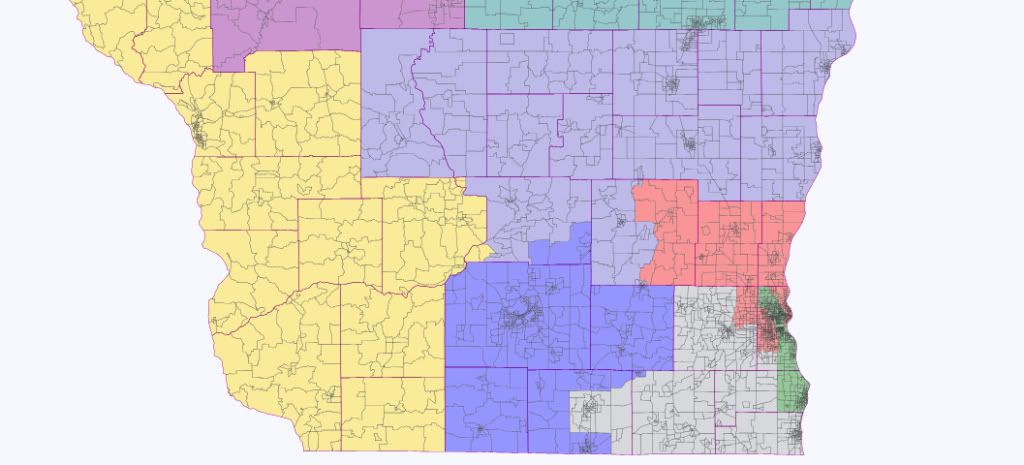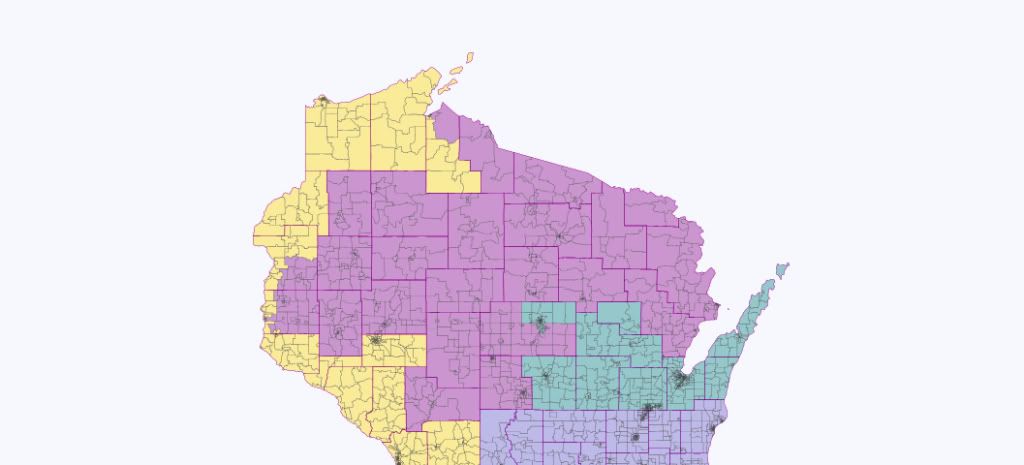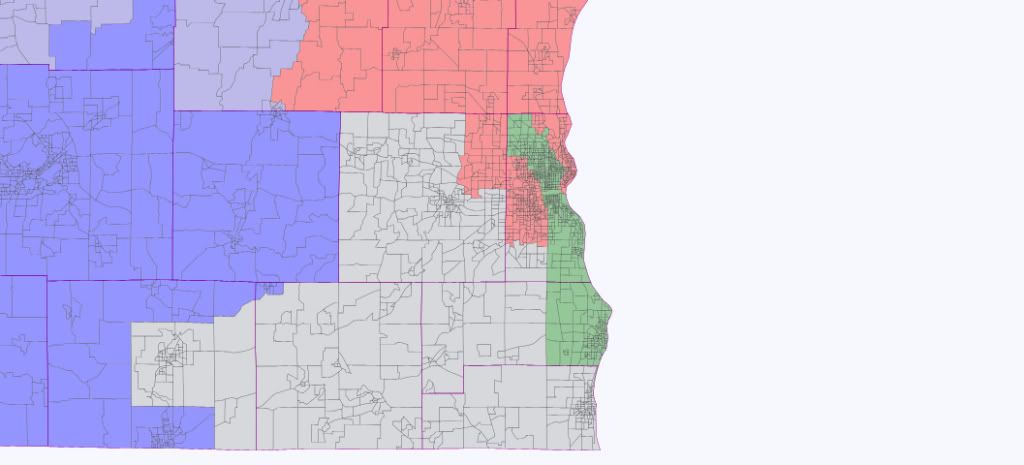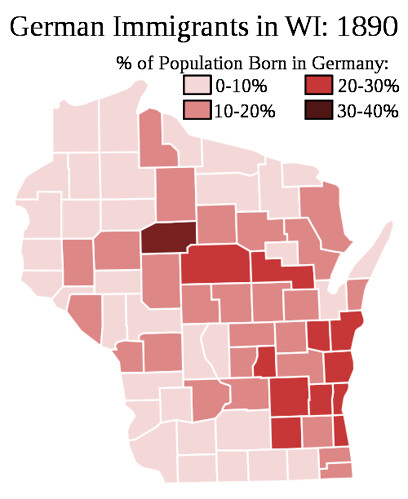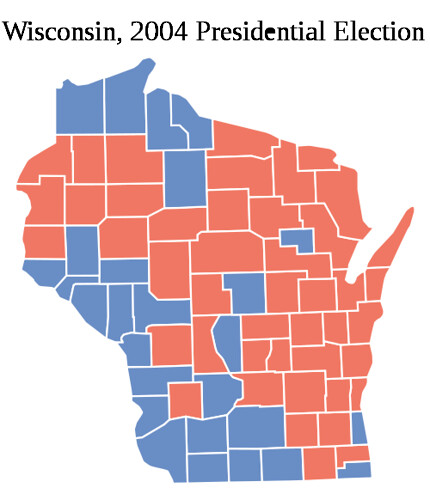Note From Diarist: This diary is primarily about the Presidential campaign. I wrote it for Daily Kos but didn’t feel it got the exposure I was hoping for. It’s very much inside baseball politics so I thought it might have some fans around here, but it is about the Presidential campaign which I know is no longer the focus of the website. If the moderator wishes to delete it, I’ll understand.
Anybody following the horse race at all has a pretty good idea where the key battlegrounds are expected to be. My personal opinion is that the three markets that are most likely to determine the 2008 election winner are, in this order, Denver (including Boulder and Fort Collins), Detroit, and Northern Virginia. Beyond those three, there are at least a dozen markets in key battleground states that will be sucking up the vast majority of campaign resources in the next 50-some days until the election. That’s the way the game is played and always will be for as long as the Electoral College is a reality. My thought process this morning was dedicated to isolating some geographic hotspots that are perhaps under-the-radar of conventional wisdom yet could nonetheless be very productive investments of time and resources for the Obama campaign. The top-10 I came up with are listed below in descending order.
10. Flagstaff, Arizona–Because it’s John McCain’s home state, nobody expects Arizona to be a swing state in 2008. It probably won’t be, but the most recent poll released from the state showed McCain leading by only six in Arizona, a smaller lead than he held in the expected battleground state of Nevada. The Obama campaign needs to do some internal polling in Arizona and see if their findings reflect the recent polling of a single-digit McCain lead. If it is, I think it would be entirely worthwhile to pour some campaign dollars in the less-expensive media market of Flagstaff, which is already favorable Democratic terrain, and also to set up a campaign stop there. It would be very embarrassing for the McCain campaign if Obama went to the university town of Flagstaff and filled the streets with tens of thousands of screaming fans in McCain’s backyard. Obviously this is not something we’re likely to see in the closing weeks of the campaign, but for headfake value alone, it’s something worth doing in September.
9. Aberdeen, South Dakota–I’ve seen only one poll coming out of South Dakota, and it showed McCain with a scant four-point lead. I don’t expect Obama to win there, but I’m puzzled why the prospect of a competitive South Dakota is not even being discussed even when the polls are similar to those of North Dakota, which is a battleground. Aberdeen is a worthwhile target for a September campaign stop and television ads for a number of reasons. This is the Democratic part of South Dakota. Tim Johnson and Stephanie Herseth pulled out statewide victories in 2002 and 2004 by running up the score in the counties in and around Aberdeen. Given that the Democrats have adopted a much more friendly platform to controversial-everywhere-but-the-Corn-Belt biofuels than Republicans in 2008, Obama could pick off alot of GOP-leaning farmers in eastern South Dakota who don’t trust McCain’s commitment to agriculture. Beyond that, Obama could do a rally with hometown boy Tom Daschle and really make some connections to voters who were out of reach for Gore and Kerry. I’m not certain about particulars of the Aberdeen media market, but I suspect it would be one of the cheapest in the country for advertising, and cuts into portions of North Dakota making it even more useful.
8. Wheeling, West Virginia–I have a good friend who lives deep into the hollers of Logan County, WV, and still insists from her interactions that she believes Obama will win West Virginia. I suspect that puts her in a minority small enough to count on one hand, but I still think some outreach effort into West Virginia would be valuable, particularly in the Wheeling area. Obama essentially ceded West Virginia to Hillary in the primary, making only one campaign stop in Charleston on the eve of the primary. Voters there don’t know him, but I suspect that if more do, the margin for McCain in the state could potentially be far less lopsided than if he doesn’t set foot there. More importantly though, I think Wheeling is important for the same reason it was important for Kerry four years ago. The market cuts into Ohio and Pennsylvania, specifically the very blue-collar regions of Ohio and Pennsylvania where Obama has the most work to do to win over skeptics. I suspect campaigning in this area is something of a defensive move, meaning his best hope is probably to cut losses rather than win over Bush voters, but in the context of controlling losses within statewide races in OH and PA, the old adage that the best offense is a good defense certainly seems to apply.
7. Council Bluffs, Iowa–Each new round of poll numbers indicate that Iowa appears less likely to ultimately be a battleground state, with Obama managing double-digit leads in the state. Again, I surmise that the untold story accounting for Obama’s strong performance throughout the Corn Belt (even Indiana!) is ethanol, specifically McCain’s previous hard-line opposition to it. The reason Council Bluffs is a secret weapon is twofold. It’s location in the heavily Republican southwest side of Iowa means the Obama campaign is on offense there, competing for traditionally Republican votes in western Iowa, but also competing for votes in Omaha, Nebraska, just across the Missouri River from Council Bluffs. We don’t hear much anymore about the prospect of Obama winning one (or even two) of the electoral votes in eastern Nebraska, and it remains a longshot. Nonetheless, raising Obama’s presence in western Iowa will have spillover effect in Omaha and the corn farmers surrounding it in Nebraska, leaving the prospect of robbing McCain of a Nebraska electoral vote on the table while simultaneously running up the score in Iowa.
6. Durango, Colorado–Chances are, the suburban doughnut surrounding Denver will decide who wins Colorado’s nine electoral votes, but if the race is as close there as most suspect it will end up being, smaller Colorado markets loom large. The fast-changing demography of Colorado was abundantly clear in the 2004 election, and perhaps no place was the change more obvious than Durango, formerly a Republican stronghold in Colorado’s southwest corner, where population growth is apparently fronted by left-leaning young people drawn to the area’s ski culture. I believe there were only five counties in America that Bill Clinton never won in 1992 or 1996, but where John Kerry won in 2004. La Plata County, Colorado, home of Durango, was one of them. If we assume that the trendlines that had clearly transformed Durango in 2004 have continued, Obama should be able to grow upon Kerry’s margin rather significantly in the area in 2008. The fact that neighboring battleground state New Mexico is a few miles south of Durango is an an additional bullet point for its utility.
5. South Bend, Indiana–Congressman Joe Donnelly showed us the potential northern Indiana holds for Democrats if we simply try there. The lesson appears to be learned as Indiana is deemed a battleground state in 2008. South Bend strikes me as the most consequential market in Indiana. Notre Dame University gives Obama a youthful base of operation while simultaneously providing Obama an outreach to Catholic voters, a demographic long cited as one of his most difficult to reach. The South Bend market also reaches into southwestern Michigan, and despite fairly encouraging polls of late, I think Obama will ultimately need all the help in can get in Michigan. Probably outside of the South Bend market but still worthy of mention is another Indiana town in Joe Donnelly’s Congressional district, Kokomo. This is a blue-collar factory town that Democrats should be winning, but rarely do. Voters in Kokomo may be some of the most likely to swing if the Obama campaign reaches out to them in a serious way.
4. Elko, Nevada–In 2004, it seemed like John Kerry was spending more time in Republican-leaning Reno than in Democratic-leaning Las Vegas. I didn’t really understand it at the time, until I saw the election returns and noticed Kerry had significantly cut into the GOP’s advantage in Reno and surrounding areas. The reason Kerry lost Nevada was that he got absolutely destroyed in rural Nevada. Obama, by contrast, beat Hillary in most rural Nevada counties, meaning there’s at least a basis for thinking he could overperform Kerry in places like Elko. Campaigning and advertising in Elko would really be taking Kerry’s 2004 effort to go on offense in Reno to the next level. Considering Kerry got less than 20% of the vote in Nevada’s fourth most populous county, worse than both Mondale and Dukakis did back in the day, there’s easily room for improvement in the area, and even a little improvement upstate Nevada could be the difference in the state.
3. Cincinnati, Ohio–Now considering Cincinnati is the third-largest media market in what is considered perhaps the most critical battleground state, calling for an Obama campaign presence there is on the surface a no-brainer, but most importantly, I see metropolitan Cincinnati as the region of Ohio where Obama is best-positioned to make gains over John Kerry. Kerry narrowly lost Hamilton County (home of the city of Cincinnati and the core of its suburbs), but with a high African-American turnout in 2008, I strongly expect the county to turn blue. Just as important are the three crimson red exurban counties surrounding Cincinnati, which accounted for Bush’s entire margin of victory in Ohio in 2004. In every election since 2004, the needle has moved dramatically against Republicans in all of these counties (Butler, Clermont, and Warren), with Jean Schmidt, Ken Blackwell, and Mike DeWine, all badly underperforming traditional GOP margins in the area. If Obama can keep this trendline going and trim his losses by a few percentage points in suburban Cincinnati, it will go a long way towards offsetting his likely underperformance in the rural portions of Ohio. And to whatever extent the Cincinnati market is an outreach into Indiana is also a feather in our cap.
2. Michigan’s Upper Peninsula–With the racial polarization of metropolitan Detroit, enflamed by the Kwame Kilpatrick scandal, and Obama’s call for tougher CAFE standards fiercely opposed by Detroit automakers, the McCain campaign has some serious ammunition against Obama to take into Michigan. I fully expect Obama will underperform Gore and Kerry in metropolitan Detroit. With that in mind, the thought process should become where we can pick up additional votes in Michigan to offset the possible hemorrhaging in the population centers. To that end, it seems like a no-brainer for Obama to take his campaign up north…way up north. The blue-collar Upper Peninsula of Michigan is sparsely populated, but its demographics seem to align with other Midwestern areas that are Obama-friendly. More to the point, the Upper Peninsula of Michigan looks like Wisconsin, thinks like Wisconsin, and votes like Wisconsin. When you look at Obama’s healthy standing in Wisconsin polls compared to Kerry four years ago or Gore’s eight years ago, my thinking is that every Obama campaign rally that begins in Green Bay should make the quick drive to Marquette, Michigan, from there.
1. Fargo-Moorhead (North Dakota/Minnesota)–I suspect there is no other media market in the country where the needle will move more significantly in Obama’s favor compared to 2000 and 2004 than Fargo-Moorhead. To the extent that North Dakota has already been identified as a battleground state, Obama’s campaign already has a presence in the area, but may nonetheless not appreciate just how many things are working to their candidate’s favor here. First of all, the cities of Fargo and Moorhead are islands of youth in a region otherwise dominated by gray hair. That cuts to Obama’s advantage demographically. Furthermore, in addition to Obama’s more farmer-friendly stand on biofuels, the Democrats have an additional ace-in-the-hole here because the region is one of the nation’s top sugar-growing areas. The sugar industry has enjoyed its relative “cartel” status and has become decidedly protectionist since the passage of CAFTA in 2005, a vote which helped every Democrat on the ticket in Minnesota in 2006 score landslide margins in the Red River Valley. Particularly on the Minnesota side, this area is historically Democratic, even though both Gore and Kerry were destroyed here. This advantage on both sides of the river extends further to the Grand Forks area, a region of North Dakota where every Democrat needs to win big in a competitive statewide race. It’s expected that Minnesota is leaning heavily Obama, but don’t underestimate the pseudo-maverick image of John McCain fooling alot of moderate suburbanites in Minneapolis-St. Paul. That raises the stakes for Obama’s need to win in places like the Red River Valley, which early indications suggest he is poised to do.


